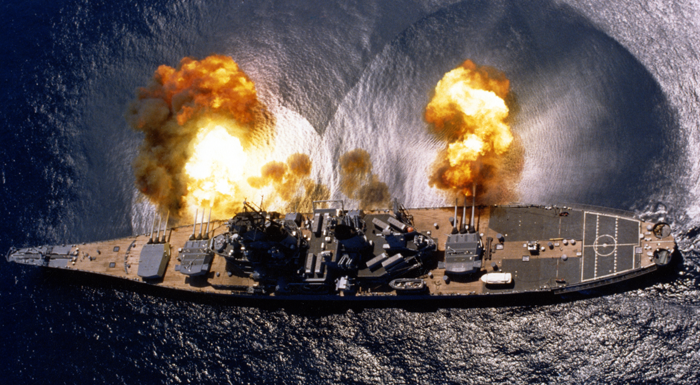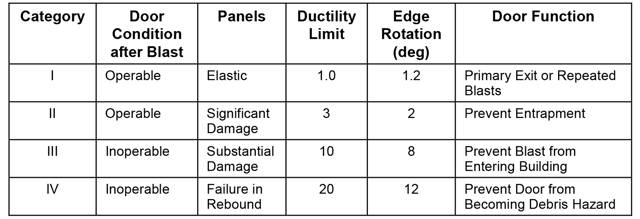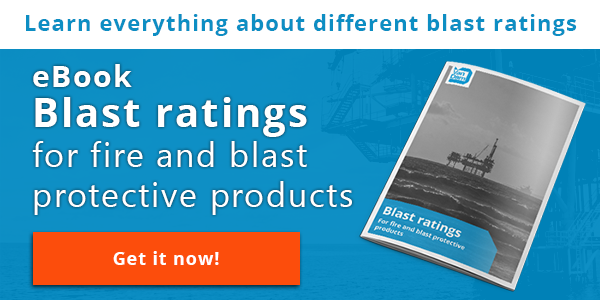
Blast resistant architectural outfitting, such as doors, are very specialized products. Once it is determined that blast doors are needed for your specific project, one needs to carefully think about the design of the doors. In general, all steel blast doors are heavier than common doors, which can make daily operation harder to personnel. Therefore, one needs to consider the functionality of a door for a specific operation. This prevents heavy doors being used when lightweight construction is of importance.
Door openings are commonly the largest openings into a building. Consequently, they provide the largest potential source of blast wave propagation when the structural integrity of the door is not sufficient to withstand the blast wave. In order to prevent blast doors from operational failure, doors need to be designed for the required blast load, specified damage, and operability requirements.
Guidelines for acceptance blast door operation
The purpose for blast doors needs to be specified during the design stage of the project. For instance, one can specify the type of protection one requires and whether the door should remain operational or not after a blast event. These specifications are significant because they may provide different levels of safety. According to ASCE Design of Blast Resistant Buildings in Petrochemical Facilities, based on the desired end-use of the door, guidelines for acceptance have been classified into four categories:
Category I – After a blast event the door should be operable and the pre-established design criteria for stress, deflection, and the limitation of permanent deformation should not be exceeded. The specified ductility ratio (elastic range) should be 1.0 or less and the door edge rotation should not exceed 1.2 degrees. The door(s) should be designed according to this category when there is a possibility of repeated blasts or when entrapment of personnel is of concern and the door is a primary exit of the building.
Category II – Similar to Category I, for this Category the door should remain operable after a blast event. Yet, significant permanent deformation to the door is permitted. The recommended ductility ratio is in the range of 2 – 3 and the recommended edge rotation is to be less/equal than 2.0 degrees. Doors designed according to this Category should remain operable to prevent entrapment of personnel.
Category III – Non-catastrophic failure of the door is allowed, however the door assembly should remain in the opening. No major structural failure of door panel, restraining hardware system and frame is permitted. The allowed ductility ratio is in the range of 5 to 10 and the edge rotation is not to exceed 8 degrees. This category should only be specified when entrapment of personnel is not a possibility.
Category IV - Outward rebound force and resulting hardware failure is acceptable.

Choosing blast doors according to these categories makes it easier to decide which one is the most suitable for each compartment.
Download our eBook for more information about blast doors and the specifications they comply to.







